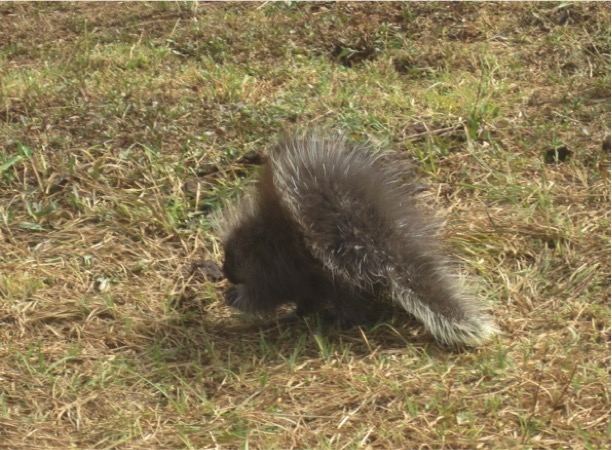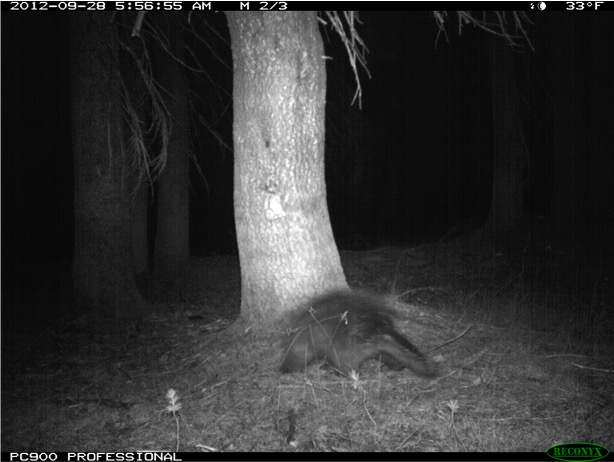
Porcupines once were common across the Sierra Nevada region. Dogs that got too close to the spikey creature often ended up with quills embedded in them that resulted in visits to veterinary offices – proof that porcupines were in the area. Tracks showing porcupines dragging their tails through the snow could be often observed in wintertime forests.
Today, except for infrequent sightings in the Tahoe Basin, few porcupines are ever reported to CSERC or to Park Service or National Forest employees of the region.
Why are porcupines so seldom seen?
Decades ago, both the U.S. Forest Service and timber industry land managers poisoned porcupines or hired seasonal hunters to shoot them in forest areas. Porcupines were considered to be pests because they often girdled young conifer trees when they fed on the cambium layer of the bark. In areas that had been clearcut and converted to tree plantations, a porcupine could chew bark on many trees -- resulting in the trees being deformed or growing multiple tops, rather than having a single trunk that allowed the tree to be profitable as sawlogs and lumber.

The practice of killing porcupines, however, generally ended decades ago. Yet it wasn’t until 2005 that CSERC and agency biologists began discussing the significant lack of porcupines observed despite our region providing such vast areas of fully suitable habitat. Some federal biologists who worked for many years in national parks or national forests of the region told CSERC staff that they have never seen a single porcupine. Even CSERC biologists, who often go into remote forest locations to set up wildlife cameras, have only encountered a porcupine a single time.
Accordingly, years back CSERC began reaching out to federal and state agencies to ask them to share any observations or reports of porcupine sightings in the Sierra Nevada from Lake Tahoe south. We sent letters to veterinary offices asking to be notified when dogs came in and had quills removed. We shared about the scarcity of porcupines with newspaper reporters and with online sites. And periodically, we’ve continue to reach out to YOU, our members, to urge you to let us know each and every time to see (and better yet, photograph) a porcupine.
Keep your distance, but let us know if you are lucky enough to see one of these charismatic, unique creatures. And PLEASE send us a picture and the details of where you had your sighting.

